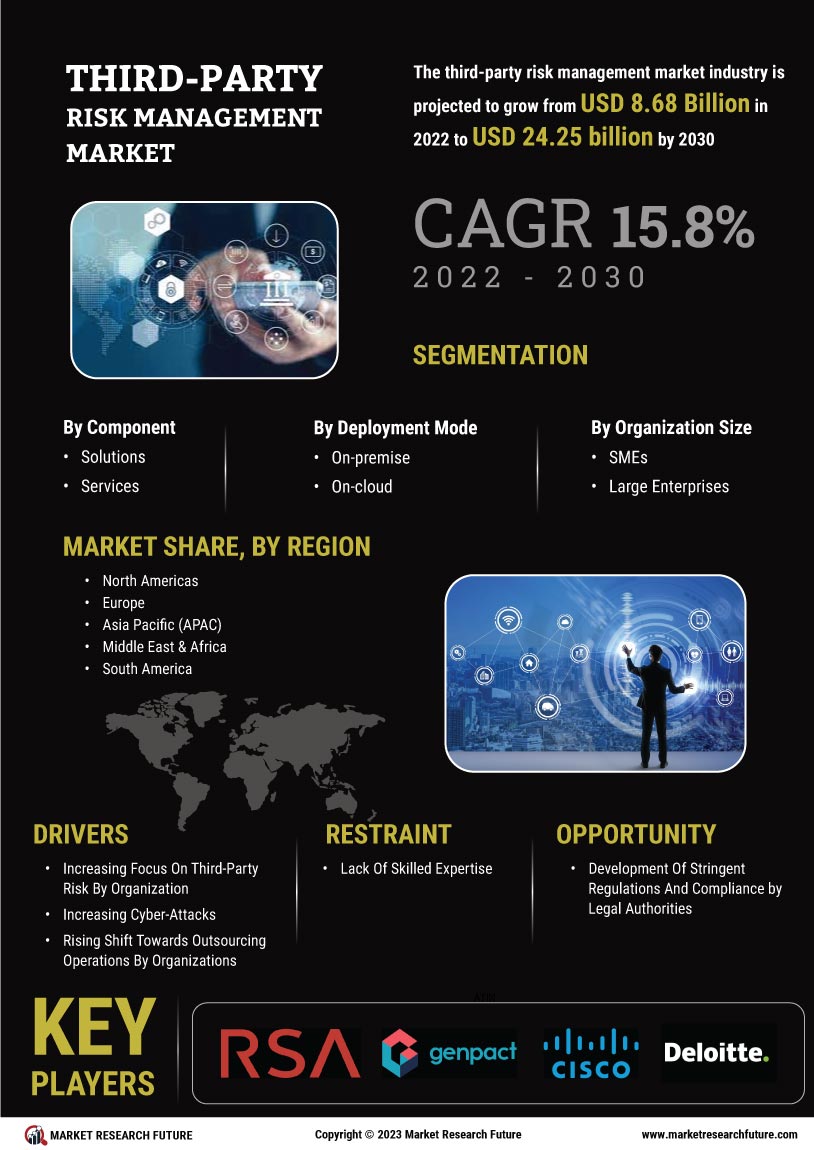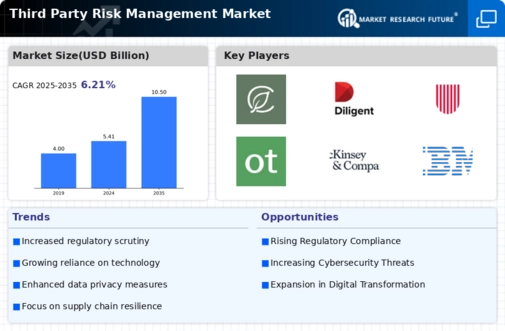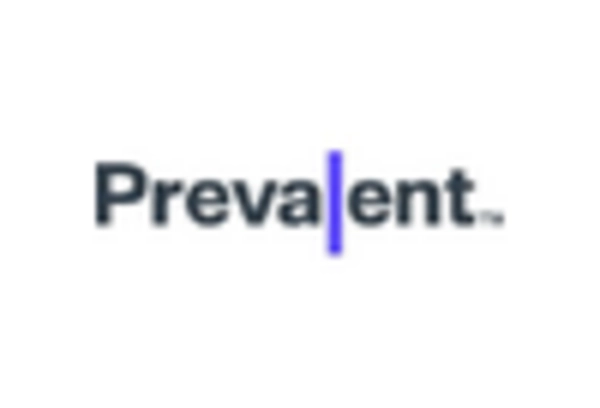Rising Cybersecurity Threats
The proliferation of digital technologies has led to an escalation in cybersecurity threats, significantly impacting the Third Party Risk Management Market. Organizations are increasingly aware that third-party vendors can serve as potential entry points for cyberattacks. Consequently, there is a pressing need for effective risk management strategies to safeguard sensitive data and maintain operational integrity. According to recent studies, nearly 60% of data breaches are linked to third-party vendors, highlighting the critical importance of addressing these vulnerabilities. This awareness is likely to propel investments in advanced risk management solutions, thereby fostering growth within the Third Party Risk Management Market.
Increased Regulatory Scrutiny
The Third Party Risk Management Market is experiencing heightened regulatory scrutiny as governments and regulatory bodies impose stricter compliance requirements. Organizations are compelled to adopt robust risk management frameworks to mitigate potential liabilities associated with third-party relationships. This trend is underscored by the increasing number of regulations aimed at ensuring transparency and accountability in supply chains. For instance, the implementation of regulations such as the General Data Protection Regulation (GDPR) has necessitated organizations to evaluate their third-party vendors rigorously. As a result, the demand for comprehensive risk management solutions is likely to surge, driving growth in the Third Party Risk Management Market.
Adoption of Advanced Analytics and AI
The integration of advanced analytics and artificial intelligence (AI) is transforming the Third Party Risk Management Market. Organizations are leveraging these technologies to enhance their risk assessment processes, enabling them to make data-driven decisions. By utilizing predictive analytics, companies can identify potential risks associated with third-party vendors more effectively. This technological advancement not only streamlines the risk management process but also improves accuracy in risk evaluation. As organizations increasingly recognize the value of data-driven insights, the adoption of advanced analytics and AI is likely to accelerate, further propelling growth in the Third Party Risk Management Market.
Focus on Ethical Sourcing and Sustainability
The Third Party Risk Management Market is increasingly influenced by the focus on ethical sourcing and sustainability. Organizations are under pressure to ensure that their third-party vendors adhere to ethical practices and sustainable operations. This trend is driven by consumer demand for transparency and corporate responsibility. Companies are now integrating sustainability criteria into their vendor selection processes, which necessitates comprehensive risk assessments. As organizations strive to align with sustainability goals, the demand for risk management solutions that address ethical sourcing concerns is expected to rise, thereby fostering growth in the Third Party Risk Management Market.
Growing Importance of Supply Chain Resilience
The Third Party Risk Management Market is witnessing a shift towards enhancing supply chain resilience. Organizations are recognizing that disruptions in third-party relationships can have cascading effects on their operations. As a result, there is an increasing emphasis on assessing and managing risks associated with suppliers and partners. The need for resilience has been further amplified by recent disruptions in global supply chains, prompting organizations to reevaluate their risk management strategies. This trend is expected to drive demand for innovative solutions that enable organizations to proactively identify and mitigate risks, thereby contributing to the expansion of the Third Party Risk Management Market.


















Leave a Comment